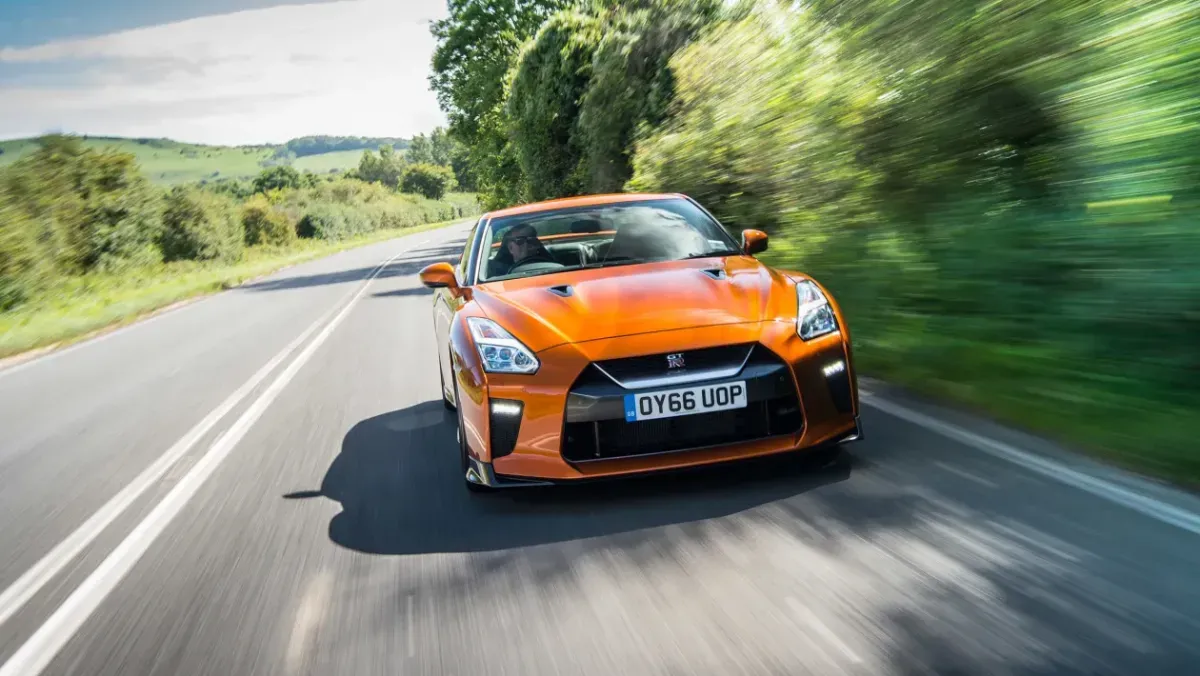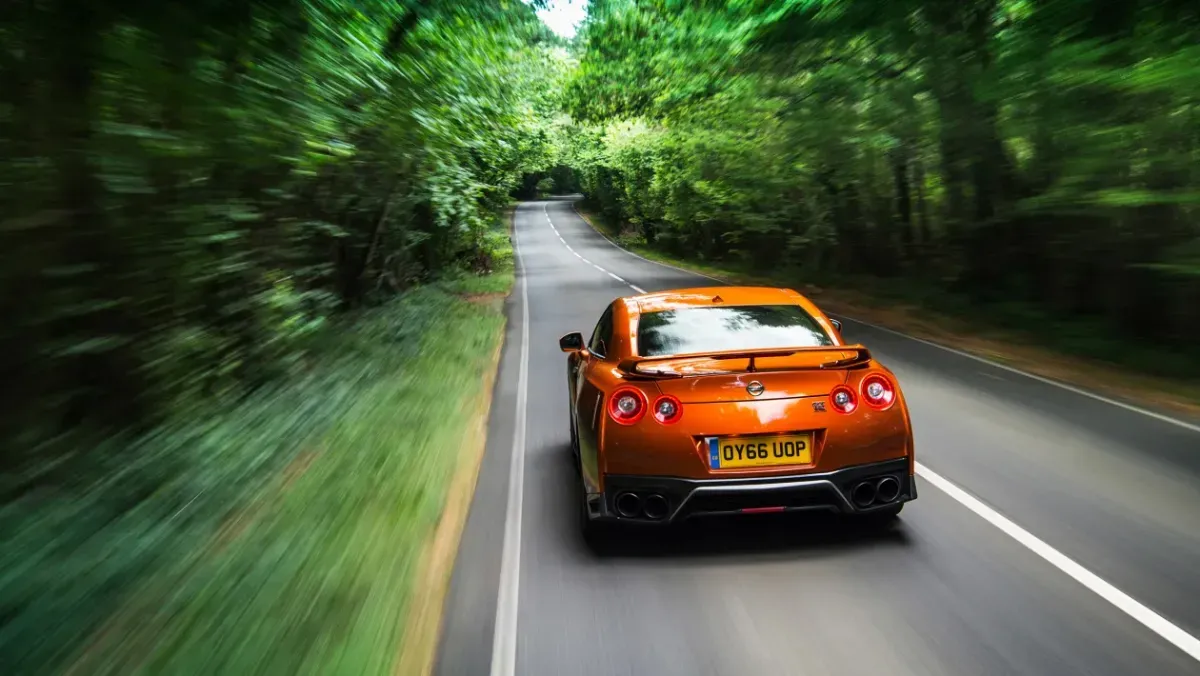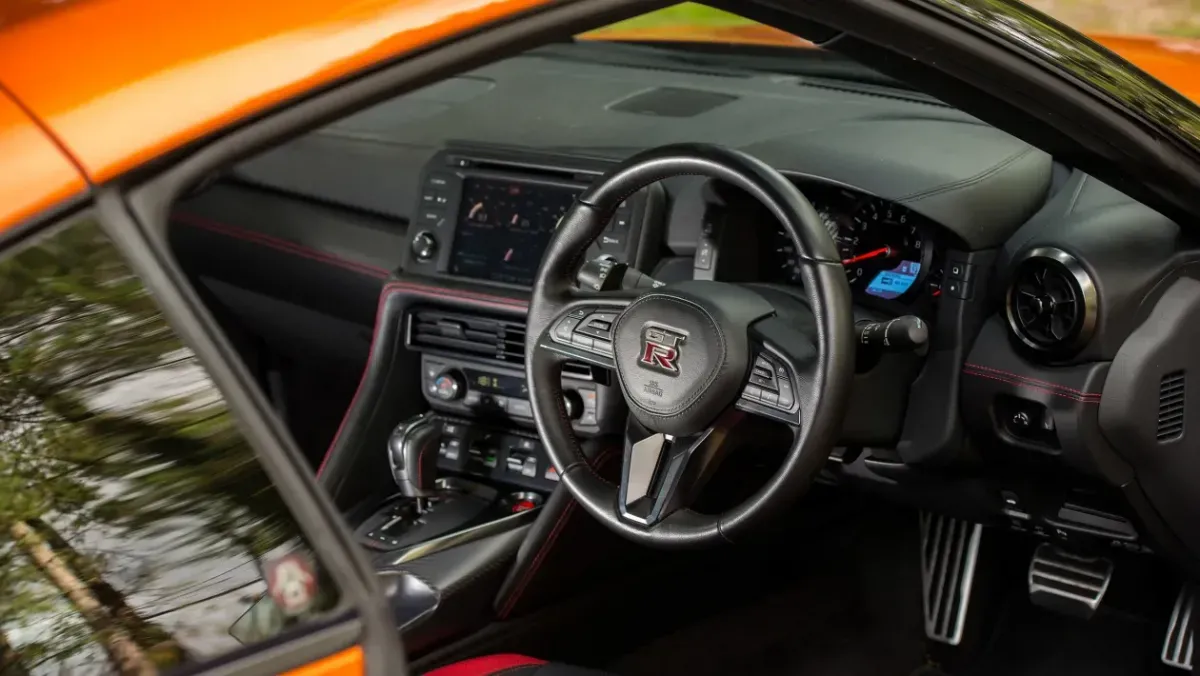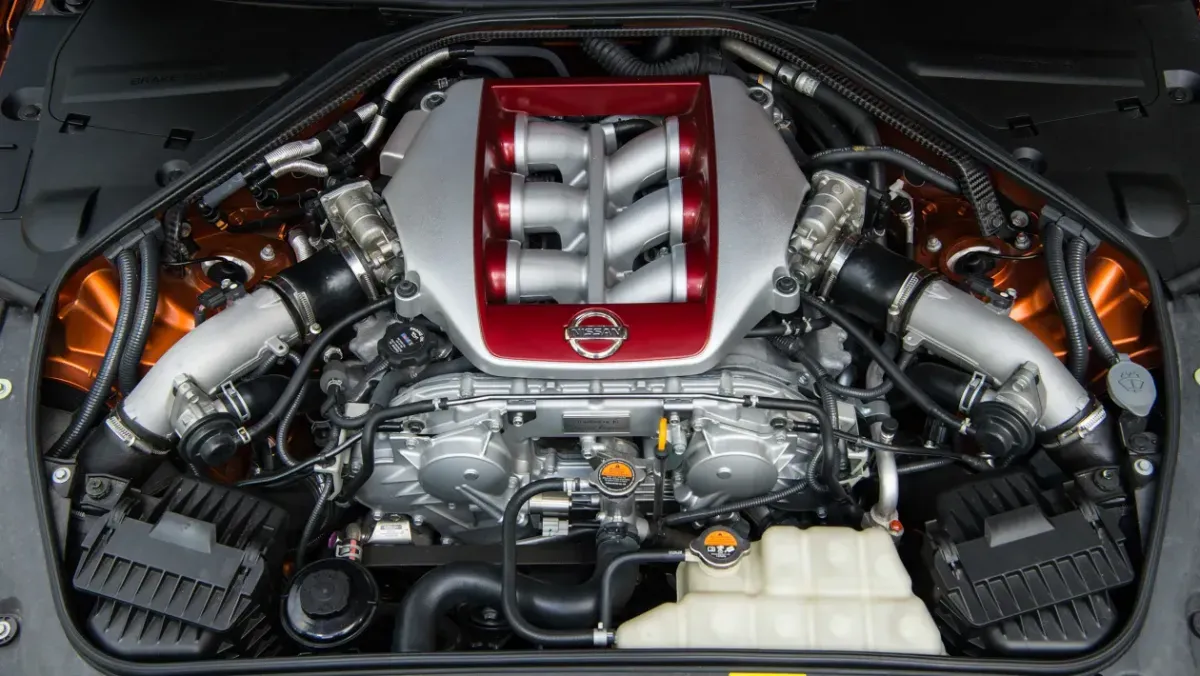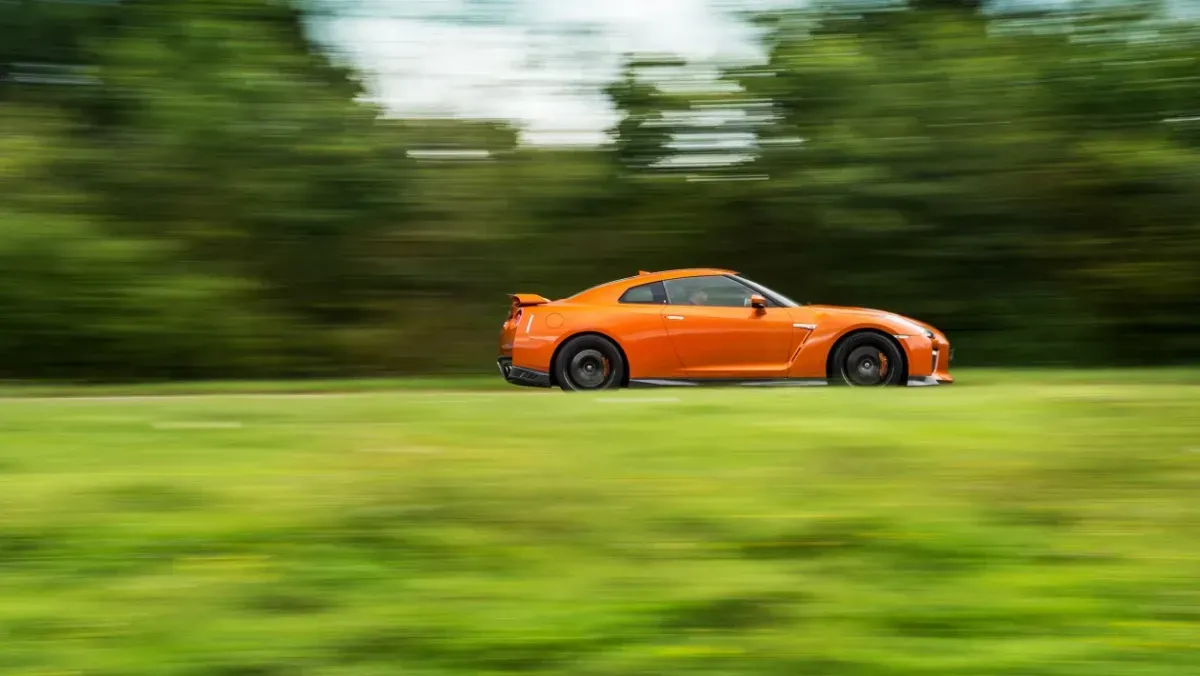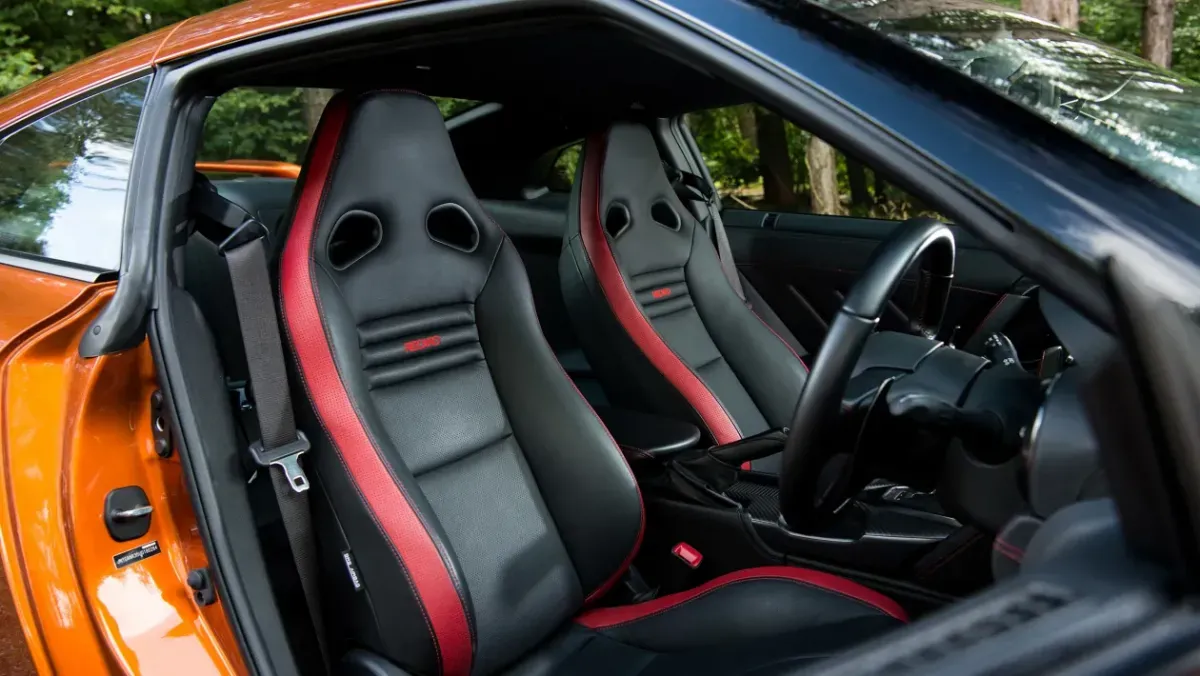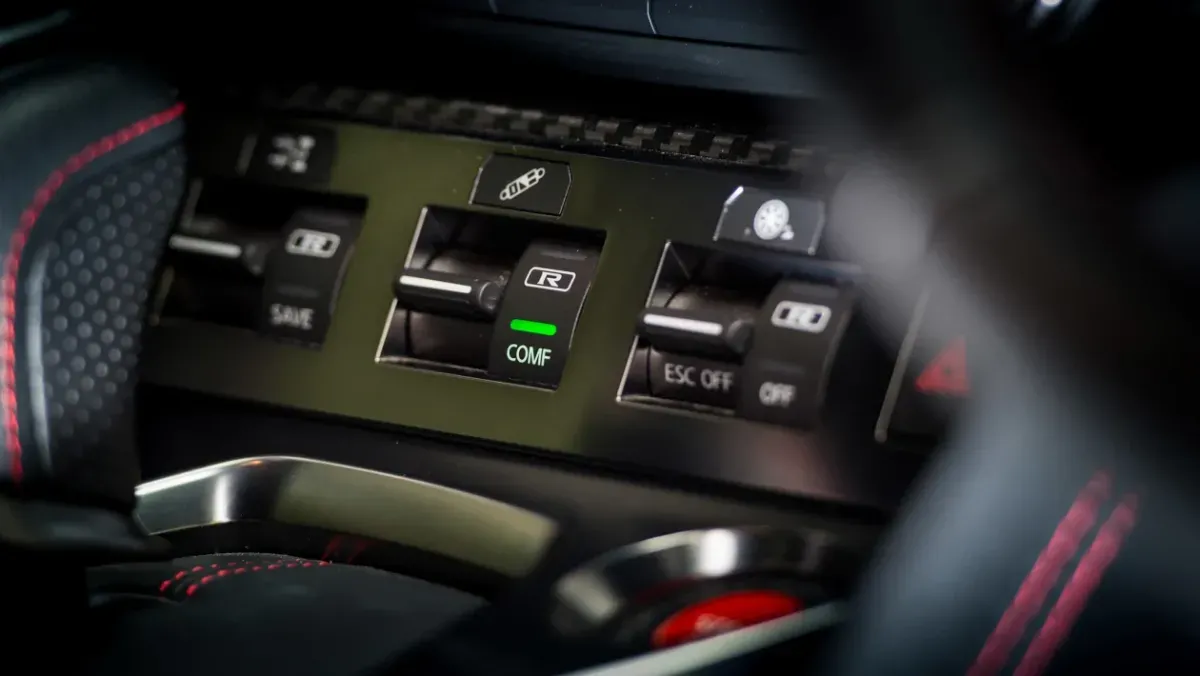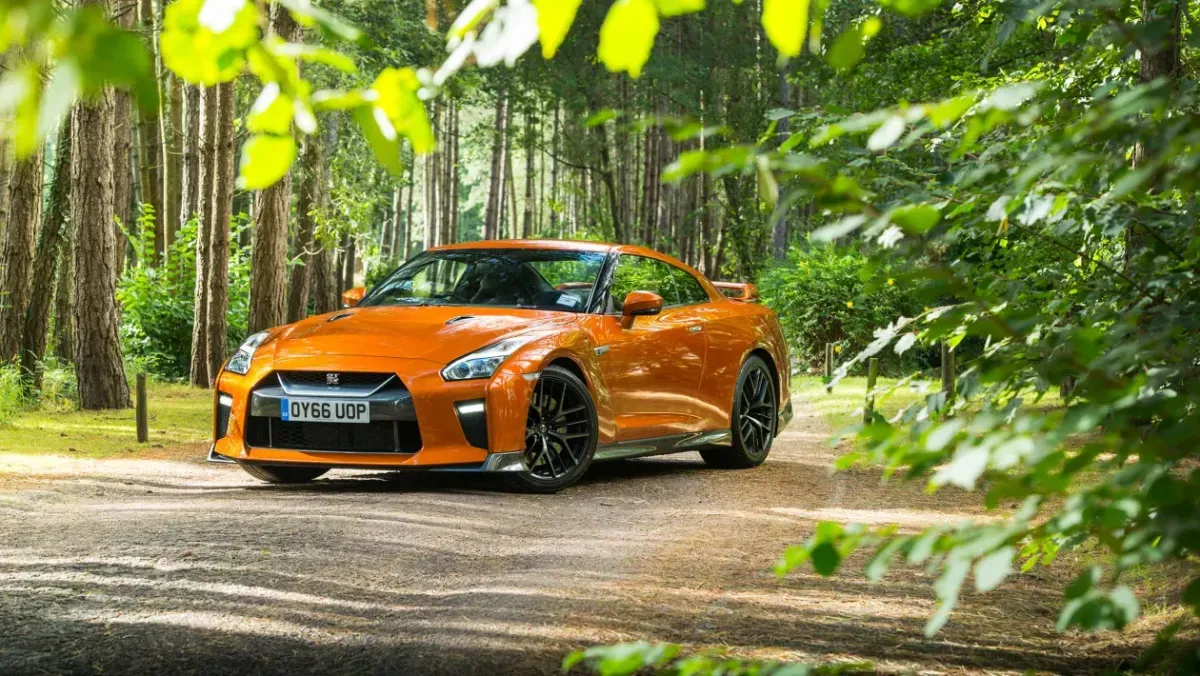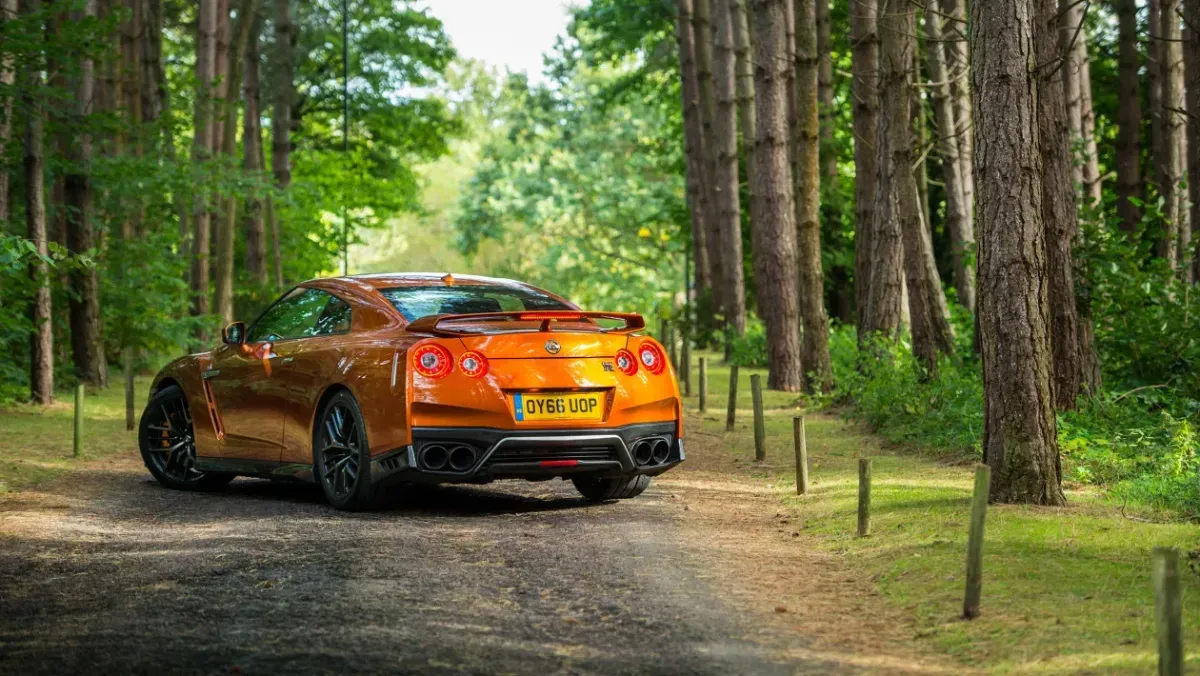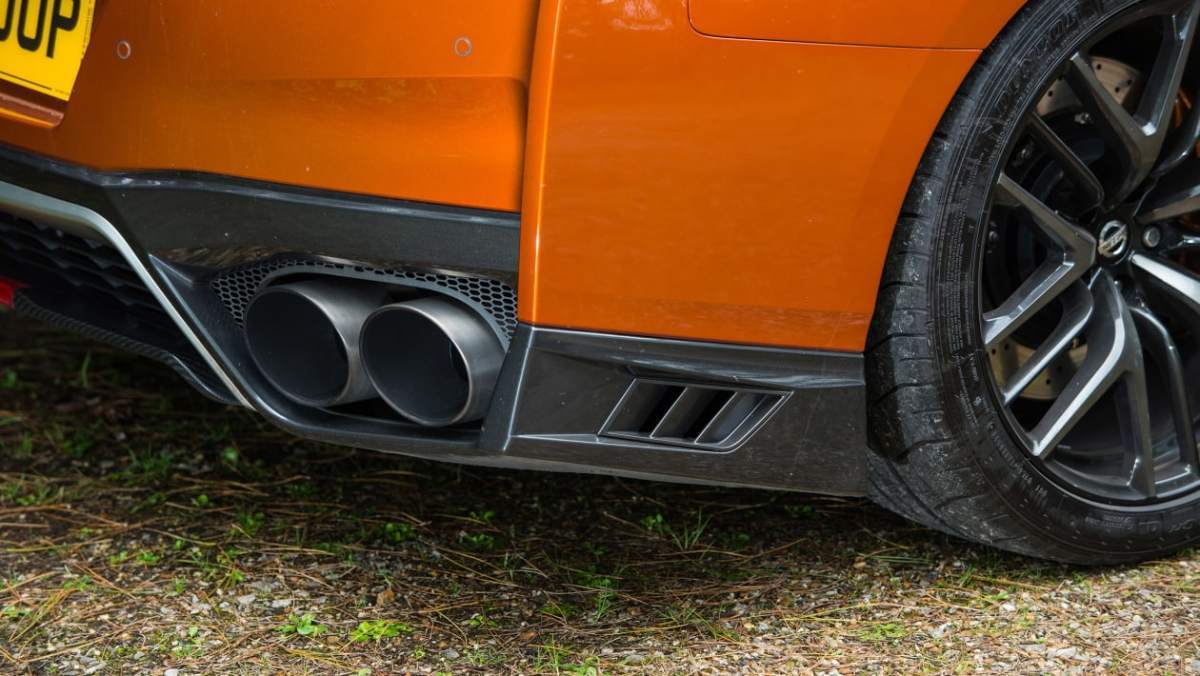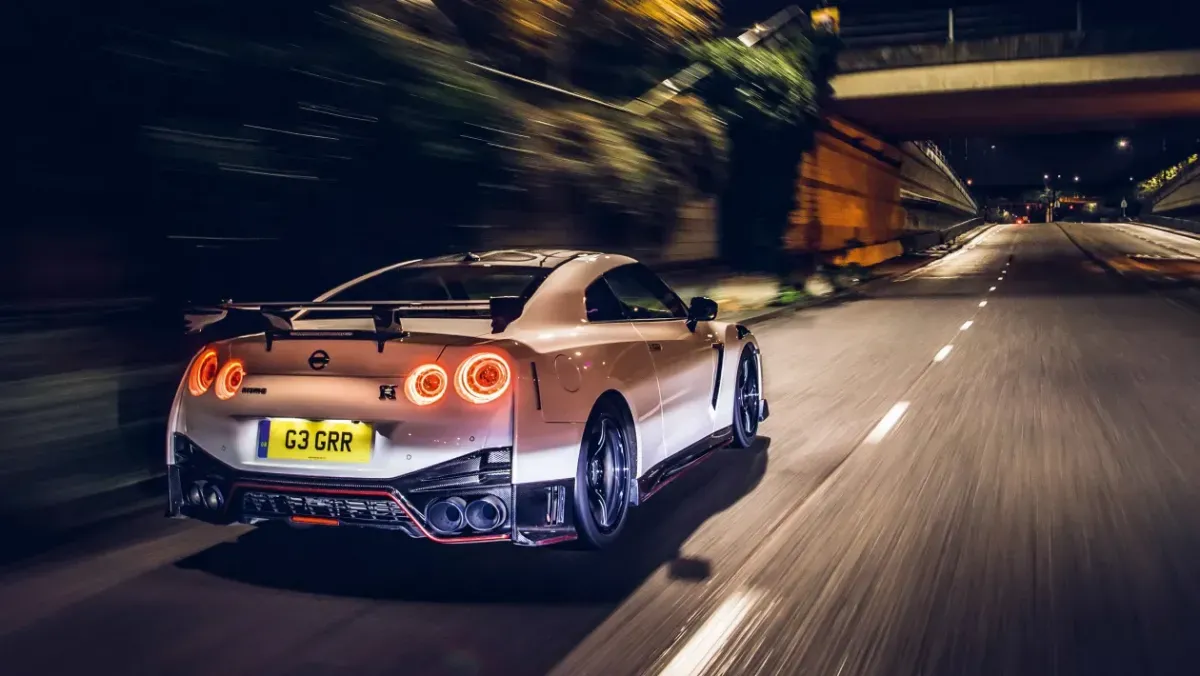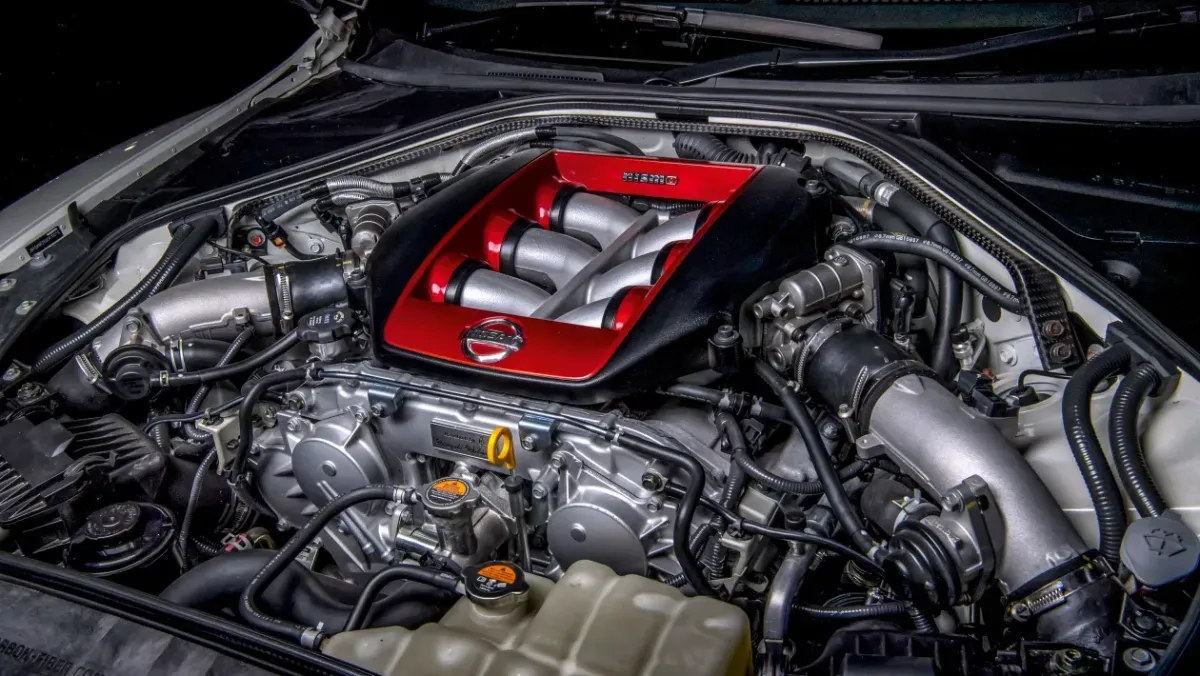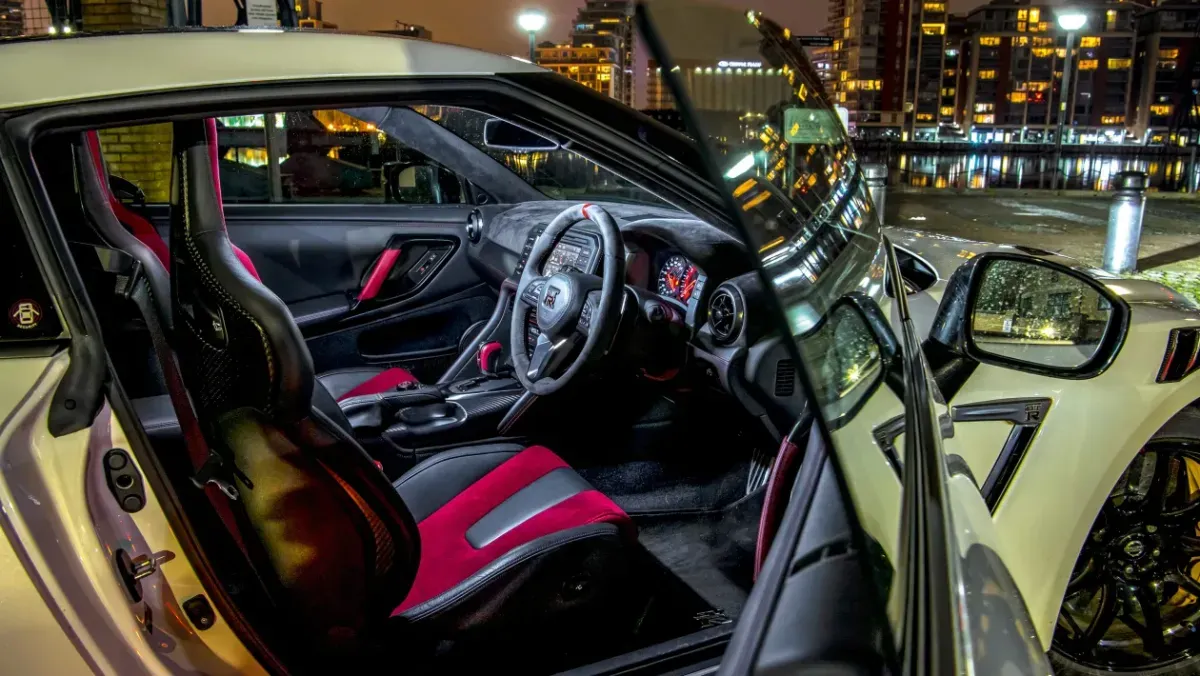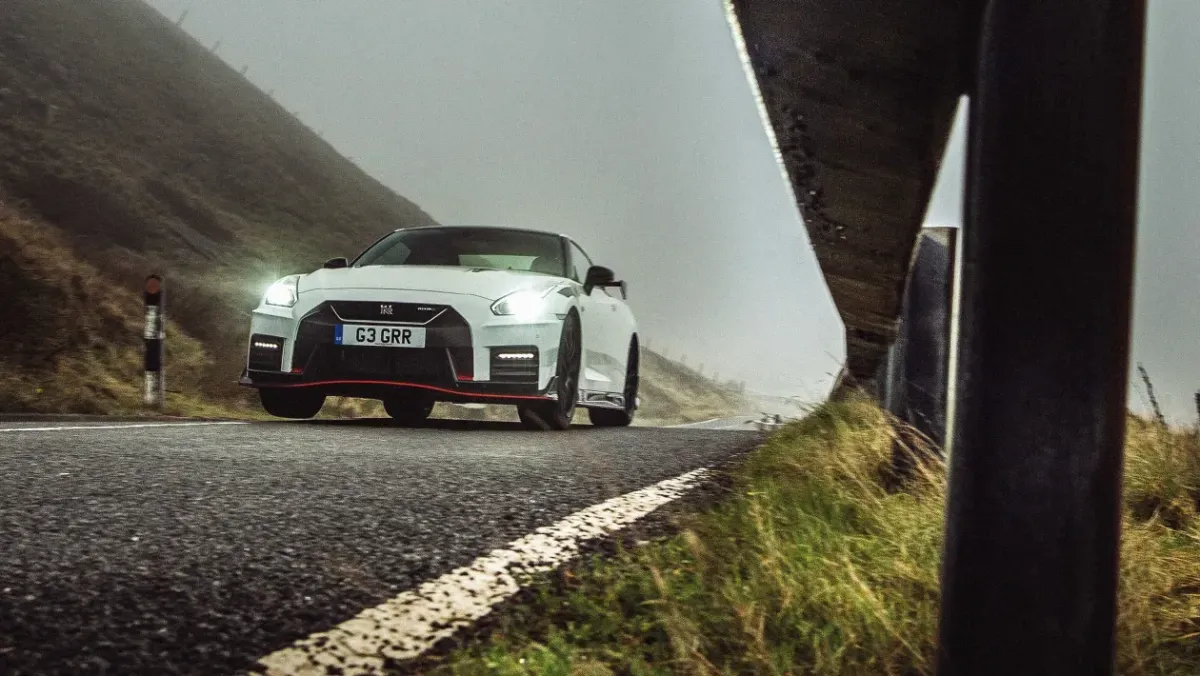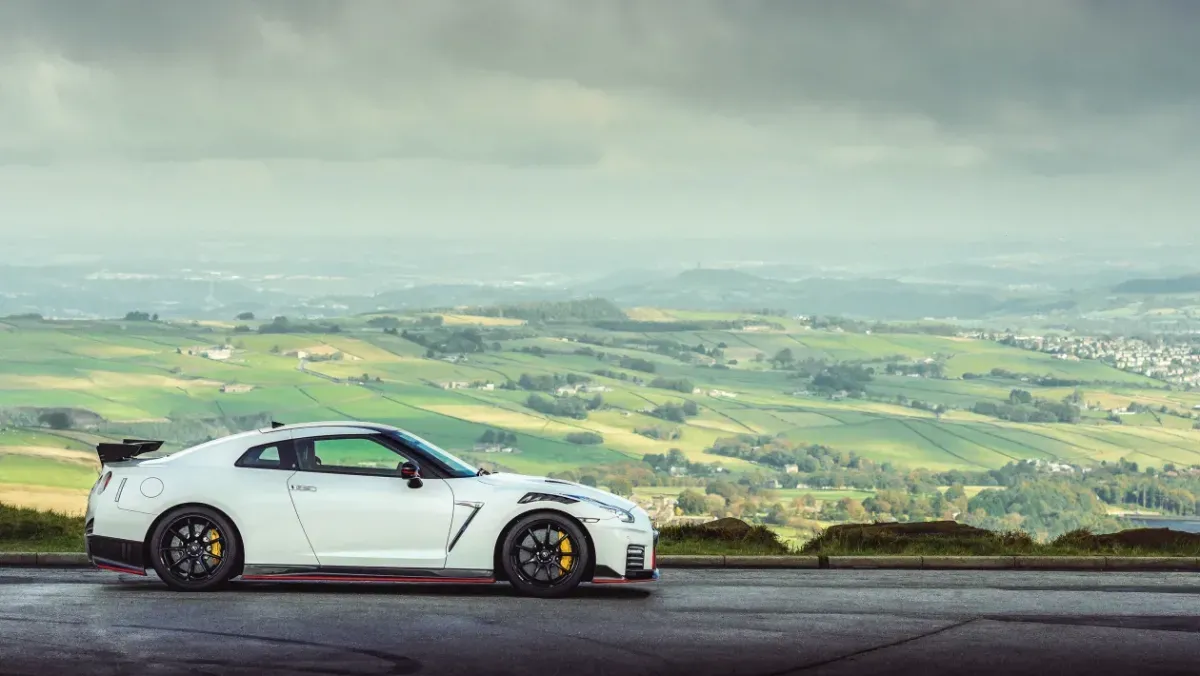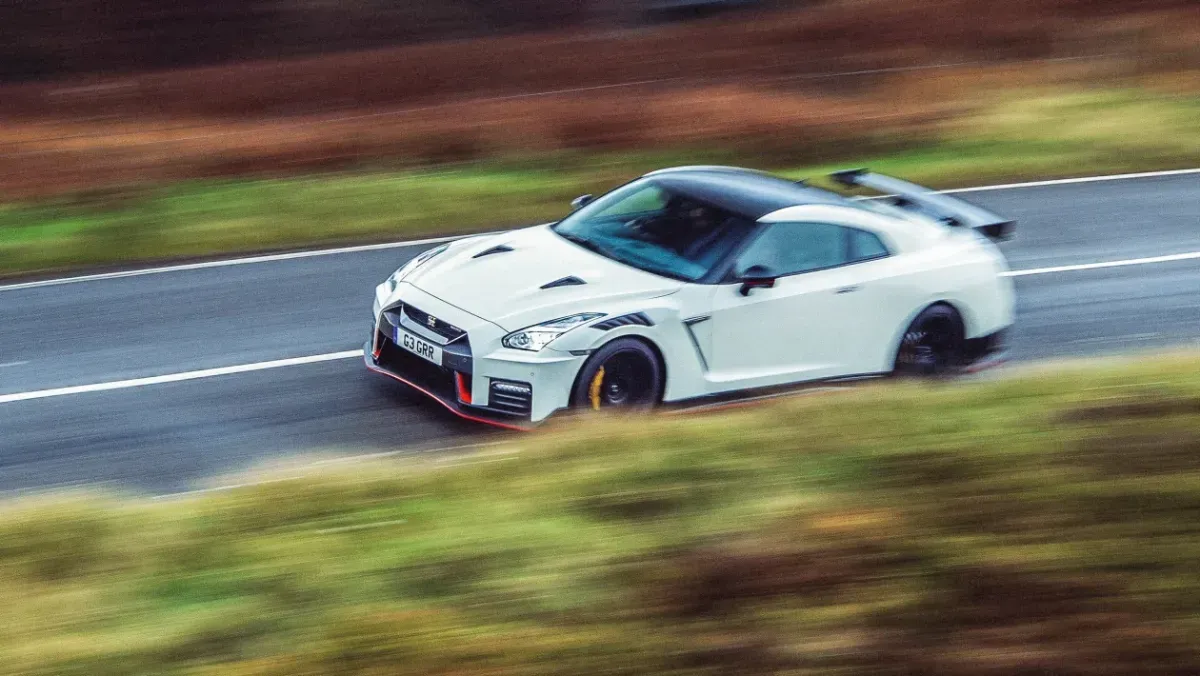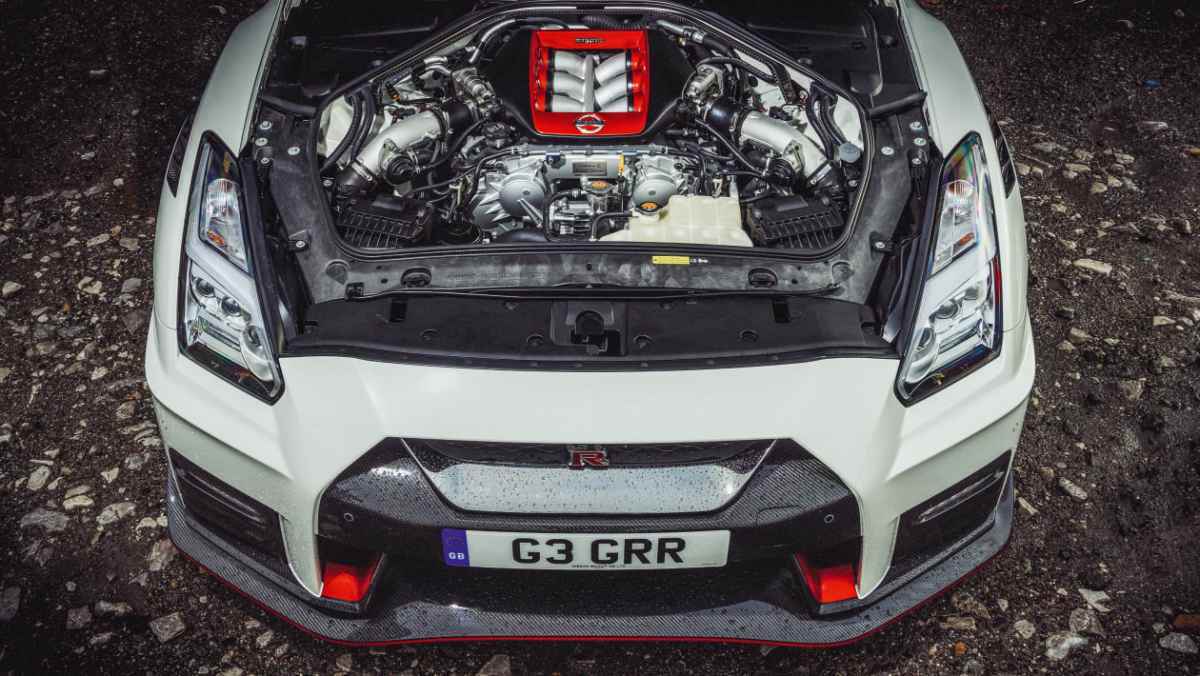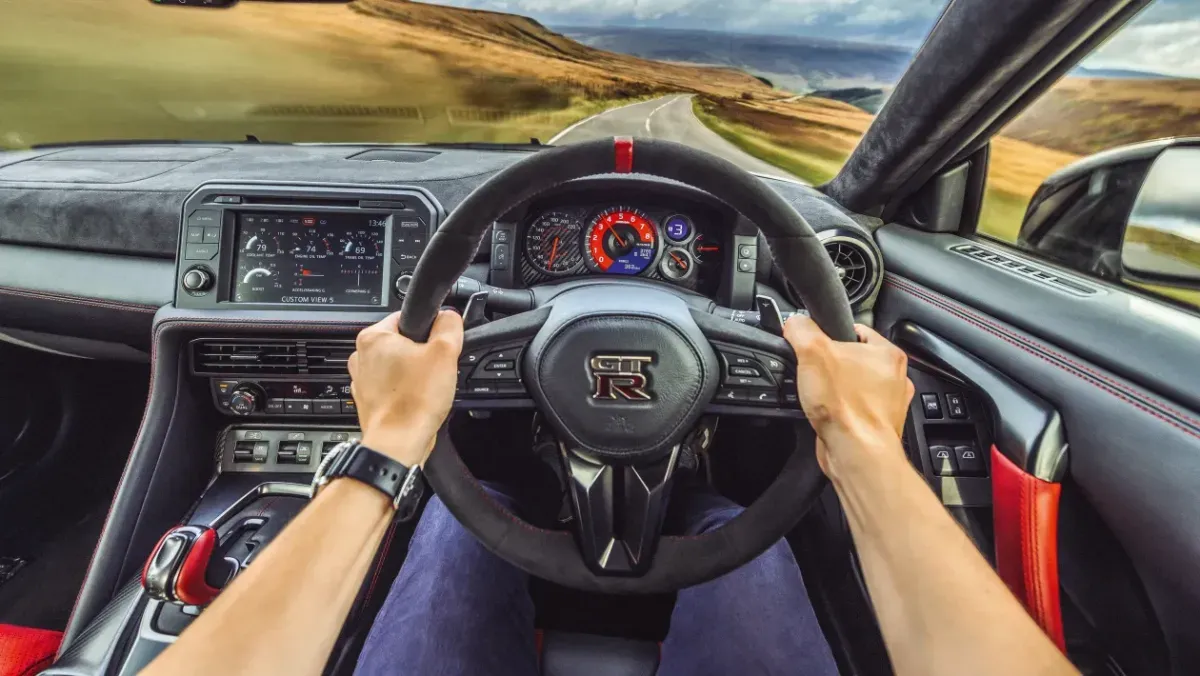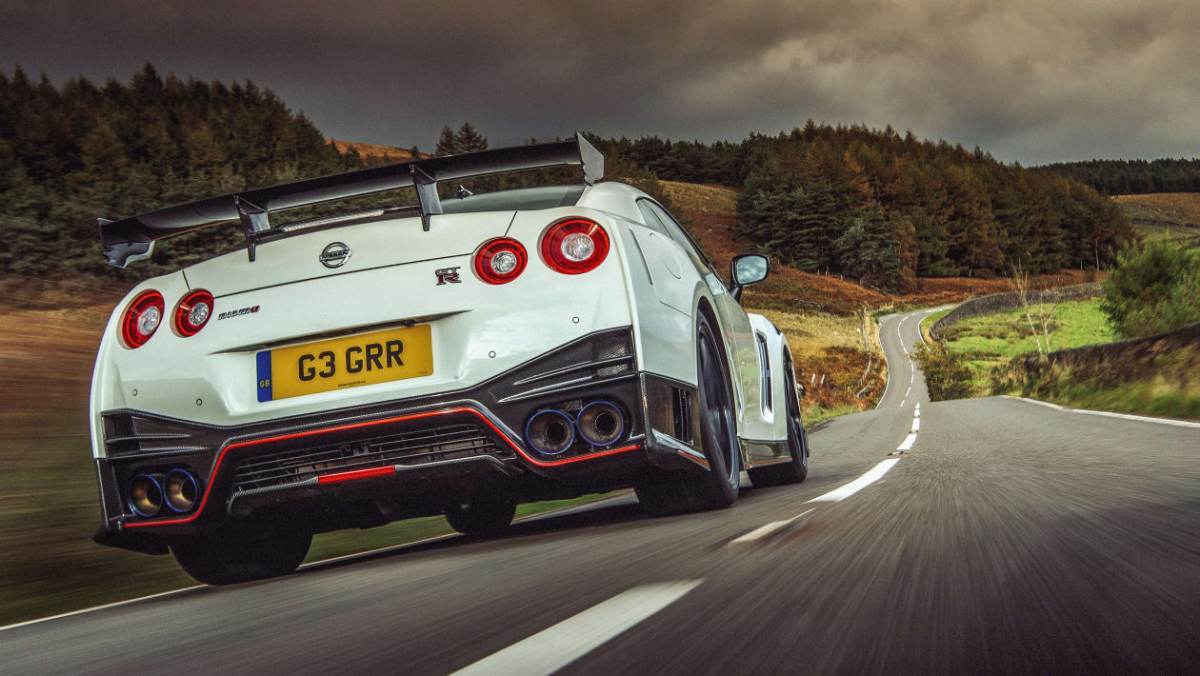The Nissan GT-R purveys a legendary status like few others. Bespoke, highly strung and intense, the R35 will live on as a high point in Japanese automotive engineering
| Staggering capability, grip, power and poise that doesn’t come at the expense of engagement | |
| A little rough around the edges |
Back in 2007 when the R35 Nissan GT-R first debuted in Japan, its facts and figures looked like something from a dreamscape. Its hardware tally was shocking (bespoke twin-turbocharged V6 engine, transaxle dual-clutch transmission, an active all-wheel-drive system that required two prop shafts and active differentials on both axles for total torque vectoring) – it seemed like Nissan might have gone too far, creating something synthetic and overly augmented.
It was a narrative that many claimed when it arrived in Europe in 2009, but the reality was something quite different. Yes, it was big and heavy, but totally brilliant. Immersive in the extreme and capable beyond what the figures suggested, it was anything but the anodised, characterless experience that some found it all too easy to label. In 2017 Nissan gave the R35 GT-R the biggest update since its launch, and despite never standing still in terms of development during those nine years, constant tweaks and adjustments to software and set-up, not to mention gradual increases in power have turned it into an unrivalled entity in high performance engineering.
There’s also been a couple of brilliant Nismo variants, plus plenty of limited-run specials, but the R35 has always fundamentally been the brilliant high performance coupe it was initially designed to be – a truly unique experience in the industry, and when the stars aligned a true great of the 21st century.
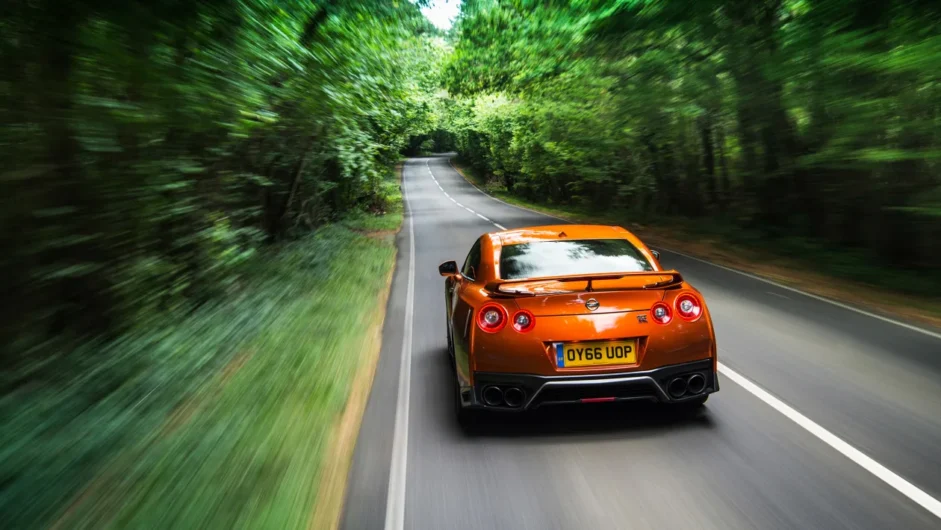
Prices, specs and rivals
The return of Godzilla after a seven-year absence proved to be well worth the wait when the new Nissan GT-R landed on shores in 2009. The technological tour de force that was the R35 GT-R comfortably became the performance yardstick in the alluringly accessible $60k price bracket.
Shortly after the GT-R’s regional release, the price began to creep up in $20k increments after each iteration emerged from the factory. The short lived bargain status hasn’t totally abandoned it today – even at a tad over $103,000 there’s nothing else that produces the equivalent on-road performance this side of six figures.
Over the course of the GT-R’s life, Nissan has gradually engineered out some of the car’s rough edges to bring about the higher degree of civility that tends to be asked of modern day performance cars, but don’t go expecting something with BMW M4 levels of slickness at low speeds.
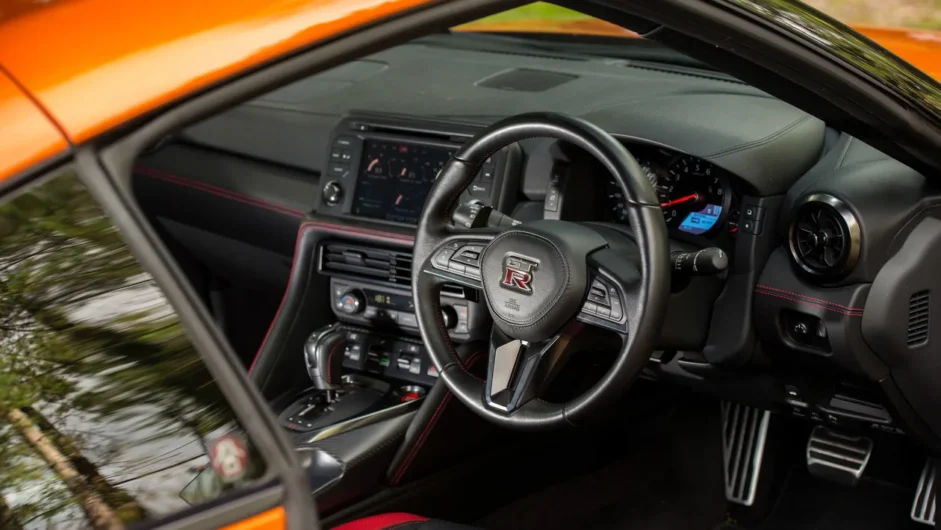
At the time of its major update in 2017, the GT-R was available in five trim levels, each more expensive than the last, starting with the entry level Pure edition. The closely-priced Recaro and Prestige trims – around $107,000- offer upgraded seating and a reupholstered cabin – the latter allowing for a larger variety of colour schemes.
The GT-R Track Edition elevated the sticker price to just shy of the $125k mark with a string of mechanical modifications: lightweight wheels, Bilstein DampTronic suspension and increased rigidity supplement its track ability. The $190k-plus Nismo sat atop the GT-R throne, its driver tied into a carbon-backed Nismo seat. From there you can wind-out the uprated V6 that produces more power and torque from behind the carbon fibre apron – one of many external parts recast in the lightweight composite.
Price comparisons involving the Nissan GT-R served up cars many leagues below it in performance terms. Despite the nigh-on $60k premium, its truest rival was the Porsche 911 Turbo. Showing a similar technical make-up and integrating a bottomless list of driver aids, it has the same physics defying a-to-b pace as the GT-R.
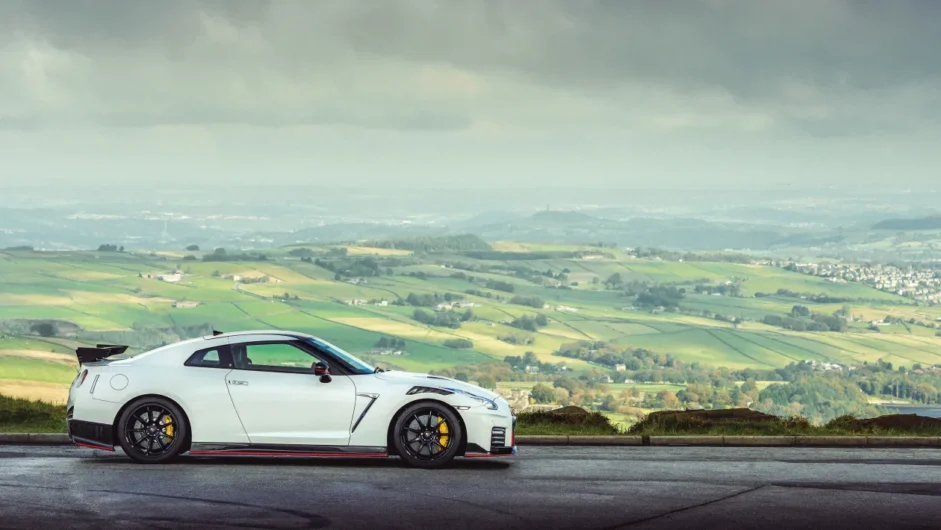
The Nismo GT-R was more of a rival to Porsche’s 911 GT3 RS and the Mercedes-AMG GT R, and especially in its post MY19 update became one of the most intoxicatingly brilliant driver’s cars with a superb level of fluidity on the road and an otherworldly sense of poise and composure.
The GT-R as we know it came to the end of its life in Europe at the end of 2021, with the base, Track Edition and Nismo models all calling it a day at the same time. In other global markets the model was revitalised with a further few special editions in 2021, namely a rebirth of the T-Spec that brought with it a few retro colour options such as the iconic Millenium Jade that clashed (and yet somehow didn’t) with the standard gold finish to the Rays wheels. The 2021 GT-R Nismo is poised to be a rare beast in Europe too, with only a handful making it over and subsequently sold.
Values in the region do appear to be keeping steady, despite a huge uptick in demand in some other markets that has made prices go into the stratosphere. Australia, for instance, has seen second-hand Nismo GT-Rs advertised for $500,000 to $600,000, but these heavily inflated figures don’t likely reflect actual sale prices for any that are changing hands.
Engine, gearbox and technical highlights
The base Nissan GT-R’s totally bespoke 3799cc VR38DETT V6 engine delivers its peak output of 562bhp at 6800rpm. With 466lb ft of torque available from 3600rpm it has a very strong mid-range, rather than a peaky top end, but the most advanced turbocharged performance engines now deliver their maximum torque from below 2000rpm.
The twin-turbo V6 does feel a touch sluggish from very low engine speeds, but from 2500rpm it starts to pull well. The two big turbochargers really make their presence felt from 3000rpm, though. From that point to the redline the GT-R feels ferociously fast in a straight line, accompanied by a distinct blast-furnace soundtrack. No matter how often you drive a GT-R you never seem to grow accustomed to the violent manner in which it accelerates.
The Nismo bolsters both ends of the GT-R’s rev band, with both more response from its twin-turbochargers at low-rpm, while building on the top-end with a furious rush that feels like it’ll never let up. It’s astounding, the internals feel like they’re made of the lightest of alloys, and are covered in frictionless baby oil.
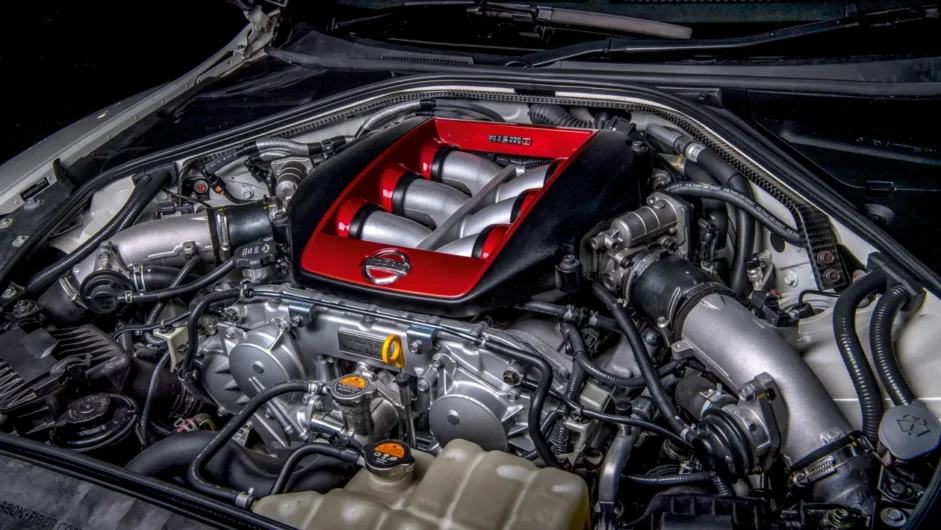
That rush is aided by the six-speed twin-clutch gearbox and the unimpeachable traction of the four-wheel drive system. Upshifts are lightning quick, while the downshifts, accompanied by an automated throttle blip, come in fast and hard. The very latest dual-clutch transmissions might be smoother at low-speeds, but the GT-R’s gearbox never feels outdated when ripping through ratios. In automatic mode, the ‘box is a little less refined than the very best units, but this is down to its indifferent attitude to needless clutch slipping – it just gets the job done.
The complex drivetrain – which features a rear transaxle, meaning drive is sent rearwards to the gearbox before being split between the front and back axles via separate drive shafts – used to grumble and chunter at low speed, but that’s now been banished in Nissan’s focus on NVH for the standard models, although the Nismo reinstates this.
Despite such incredible forces generated by the standard GT-R, the Nismo is even more impressive. The acceleration times between the two models might not differ, but the Nismo is so incredibly quick in a straight line it has the ability to embarrass just about any car, including the standard GT-R.
Performance and 0-100
With each model year upgrade the GT-R was made faster and faster. The MY17 version had 562bhp, 20bhp up on the previous model, yet despite the extra power Nissan claimed the same 2.7sec 0-100kph time and 315kph top speed as before.
An advanced four-wheel drive system, a quick-shifting twin-clutch gearbox and an electronic launch control system ensure the GT-R accelerated at a staggering pace, no matter what the official figures might be. The GT-R is, as it was when it was new, a phenomenally quick car.
Nothing else at this price point – excluding a handful of ultra-lightweight track day cars – offers such impressive performance. You’d need to fork out over $200,000 on a Porsche 911 Turbo S to match the GT-R’s straight line pace, for instance.
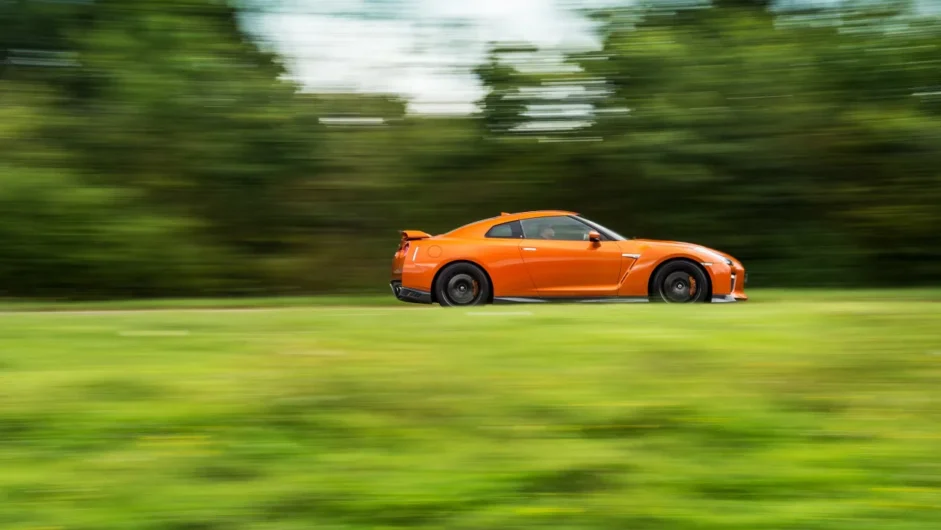
Nissan has certainly succeeded in its aim of reducing NVH on standard models over the years, though. On the Autobahn the GT-R still rips up to 241kph with utter disdain, feeling beautifully stable at big speeds. However, there is far less tyre noise encroaching into the cabin and a long journey would be a much more pleasant experience than in the old car.
Nissan claims the GT-R Nismo, even though it has 592bhp (30bhp more), has the same 0-100kph time and top speed of the standard car – which is likely more to do with physics, rather than the powertrain’s actual outputs
Ride and handling
The standard GT-R was definitely more of a GT after its 2017 update, with greater habitability in everyday use on the road. It certainly still accelerated like a GT-R, though, and if anything its engine felt slightly stronger at the top of the rev-range, staying keen until all the rev-limiter lights were illuminated. Overtakes have rarely felt so easy.
However, there was definitely less aggression in the way that the GT-R handled. It was slightly mellower on turn in, and some of the assertive agility that we are used to has been removed. There was still more than enough power to get the tail swinging wide on the exit of a corner, but unless you trail braked, it doesn’t feel like you will unsettle the rear with turn-in alone. It still demolished a B-road in alarming fashion, leaning on incredible grip and leaving most other cars for dead in the process, but a bit of the instant adjustability felt like it had been removed. It felt more secure and planted, but inevitably a little less entertaining.
One notable indication that the 2017 GT-R shifted its focus is that it felt like the R setting was necessary when driving really hard on the road. Previously that would have been unthinkable, with the normal setting being plenty firm enough and the R setting usable only on a track. However, if you left the Bilstein dampers of the new car in Normal, the car could feel a little floaty when pushing on through compressions and over bumps.

It was still freakishly quick on both road and track, and still felt distinctively GT-R, but with a lift in day-to-day usability. And this made complete sense really, because of the extended model range of three that arrived with the 2017 update. In addition to the base car, there was also a Track Edition (which restored some of the chassis’ keen, edgy agility) and then the full-on Nismo.
The GT-R Nismo was certainly a different prospect. It is a hardcore track car that still somehow works on the road.
We’ve spent plenty of time with the Nismo and it remains one of the most astonishingly brilliant feats of engineering achieved this decade. It grips, turns and stops like almost nothing else, but its greatest talent is the level of engagement it portray’s along with it. The hydraulic steering delivered a constant stream of feedback about how much grip the front tyres have. While the throttle, thanks to the engine’s power and response, gave you the ability to adjust the car’s angle mid-corner.
Slacken off the dampers and there’s a level of fluidity to the way it attacked the road that felt impossible considering how well contained the body was. With such big speeds so easily accessible, the Nismo’s fascinating ability of feeling 500kg lighter than its kerb weight made it a car you don’t just drive fast, but can start to take liberties with, pushing beyond its staggeringly high limits with unnatural ease.
L/100km and running costs
Official stats for the Nissan GT-R were 17L/100km in the city and 8.8L/100km motorway, with an official combined figure of 11.8L/100km. In reality, we normally see high 20s on lengthy motorway cruises, but any serious driving and you’re well into the teens.
Running costs are roughly $2500-$3500 per year including tyres if using official Nissan dealerships and that excludes insurance. Don’t for a second think this will be as cheap as a conventional Nissan to run. This is a proper ultra-high performance car and brings the expected costs with it.
Using quality independents like Litchfield Imports will help bring costs down, but major services that require things like brake or transmission fluid replacement will still be expensive. You also might want to factor in the costs of upgrades, as the R35 GT-R is highly modifiable.
Interior and tech
The cabin of the 2017 model will be familiar to those accustomed to the GT-R. There is a new, bigger infotainment screen, a new steering wheel and carbon on the transmission tunnel. There is also a new knob down near the bright red starter button that controls the satnav and radio and works much like BMW’s iDrive controller.
The GT-R’s column-mounted paddles have been replaced with ones attached to the back of the steering wheel. We prefer the longer throw of the old versions, but that’s really just personal preference.
It still isn’t the sort of cabin that will delight aesthetes, but it brings everything up to date. Some extra leather makes it feels a bit less utilitarian, but the new larger infotainment screen feel less of an afterthought.
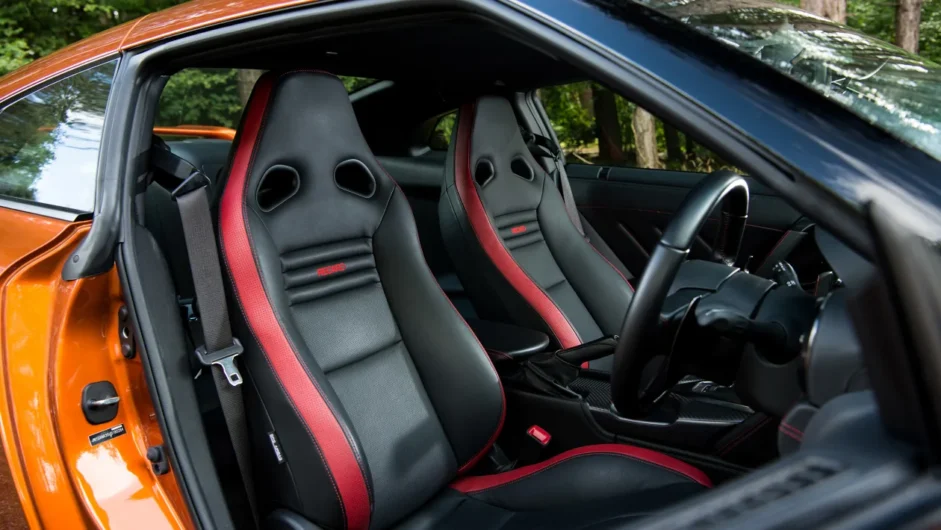
The Polyphony Digital- (studio behind Gran Turismo) are responsible for the GT-R’s infotainment system and it still has a few tricks up its sleeve. It’s nice to be able to customise the information it shows, choosing from things like yaw and g sensors as well as seeing boost pressure displayed while you drive.
The carbonfibre backed seats and Alcantara steering wheel in the GT-R Nismo do elevate its interior beyond the standard GT-R. However, it still doesn’t feel as though it matches its $190,000 price tag.
Design
The GT-R is far from subtle. Its big exterior makes it a very imposing road car, and while its four large tail pipes, big rear wing and gaping mouth exaggerate its size.
These physical proportions do make its ultimate performance seem even more remarkable; that something so large can move at such a rate is constantly surprising.
It received a subtle facelift in 2017, softening its look, which fits with the model’s more comfortable attitude. The styling changes aren’t just for aesthetics, though. Nissan aimed to improve the cooling by increasing vents and openings without increasing drag.
The GT-R Nismo features a much more aggressive aero package, with a large rear wing, more pronounced shoulders over the front wings and deeper front splitter. Spotting the difference between the old GT-R Nismo and the new 2017 model isn’t easy, the biggest difference is the aggressive front splitter that makes it look more like the GT3 car, and carbon slats venting the front wheel arches.
This article originally appeared at evo.co.uk
Copyright © evo UK, Autovia Publishing

